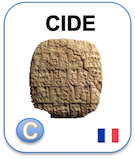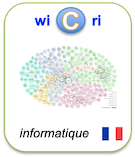The effects of interference on recognition of haptic pictures in blindfolded sighted participants: the modality of representation of haptic information.
Identifieur interne : 002120 ( Main/Exploration ); précédent : 002119; suivant : 002121The effects of interference on recognition of haptic pictures in blindfolded sighted participants: the modality of representation of haptic information.
Auteurs : Rebecca C. Holtby [Canada] ; Amedeo D'AngiulliSource :
- Scandinavian journal of psychology [ 1467-9450 ] ; 2012.
English descriptors
- KwdEn :
- MESH :
- physiology : Attention, Recognition (Psychology), Stereognosis, Touch.
- Female, Humans, Male.
Abstract
Haptic picture recognition was tested in 36 undergraduate students to determine whether haptic representations are visual or multi-modal. Participants explored target haptic pictures and were asked to recognize the target from three alternatives. Each participant completed eight control and eight interference trials in visual, lexical and tactile recognition modalities. For interference, participants were assigned to either an articulatory suppression (repeat "the" at a constant rate) or a visual interference (watch a visual display) condition, to prevent recoding into a verbal or visual code. The results showed that accuracy was higher at control compared to interference trials and for tactile compared to lexical recognition. Additionally, lexical and tactile recognition decreased with articulatory suppression whereas only tactile recognition decreased with visual interference. These findings suggest that haptic pictures may be represented by coordinating visual and verbal codes.
DOI: 10.1111/j.1467-9450.2011.00934.x
PubMed: 22251003
Affiliations:
Links toward previous steps (curation, corpus...)
- to stream PubMed, to step Corpus: 000D24
- to stream PubMed, to step Curation: 000D24
- to stream PubMed, to step Checkpoint: 000A32
- to stream Ncbi, to step Merge: 001D69
- to stream Ncbi, to step Curation: 001D69
- to stream Ncbi, to step Checkpoint: 001D69
- to stream Main, to step Merge: 002144
- to stream Main, to step Curation: 002120
Le document en format XML
<record><TEI><teiHeader><fileDesc><titleStmt><title xml:lang="en">The effects of interference on recognition of haptic pictures in blindfolded sighted participants: the modality of representation of haptic information.</title><author><name sortKey="Holtby, Rebecca C" sort="Holtby, Rebecca C" uniqKey="Holtby R" first="Rebecca C" last="Holtby">Rebecca C. Holtby</name><affiliation wicri:level="1"><nlm:affiliation>Department of Neuroscience, Institute of Interdisciplinary Studies, Carleton University, Canada. holtby.rebecca@gmail.com</nlm:affiliation><country xml:lang="fr">Canada</country><wicri:regionArea>Department of Neuroscience, Institute of Interdisciplinary Studies, Carleton University</wicri:regionArea><wicri:noRegion>Carleton University</wicri:noRegion></affiliation></author><author><name sortKey="D Angiulli, Amedeo" sort="D Angiulli, Amedeo" uniqKey="D Angiulli A" first="Amedeo" last="D'Angiulli">Amedeo D'Angiulli</name></author></titleStmt><publicationStmt><idno type="wicri:source">PubMed</idno><date when="2012">2012</date><idno type="doi">10.1111/j.1467-9450.2011.00934.x</idno><idno type="RBID">pubmed:22251003</idno><idno type="pmid">22251003</idno><idno type="wicri:Area/PubMed/Corpus">000D24</idno><idno type="wicri:Area/PubMed/Curation">000D24</idno><idno type="wicri:Area/PubMed/Checkpoint">000A32</idno><idno type="wicri:Area/Ncbi/Merge">001D69</idno><idno type="wicri:Area/Ncbi/Curation">001D69</idno><idno type="wicri:Area/Ncbi/Checkpoint">001D69</idno><idno type="wicri:Area/Main/Merge">002144</idno><idno type="wicri:Area/Main/Curation">002120</idno><idno type="wicri:Area/Main/Exploration">002120</idno></publicationStmt><sourceDesc><biblStruct><analytic><title xml:lang="en">The effects of interference on recognition of haptic pictures in blindfolded sighted participants: the modality of representation of haptic information.</title><author><name sortKey="Holtby, Rebecca C" sort="Holtby, Rebecca C" uniqKey="Holtby R" first="Rebecca C" last="Holtby">Rebecca C. Holtby</name><affiliation wicri:level="1"><nlm:affiliation>Department of Neuroscience, Institute of Interdisciplinary Studies, Carleton University, Canada. holtby.rebecca@gmail.com</nlm:affiliation><country xml:lang="fr">Canada</country><wicri:regionArea>Department of Neuroscience, Institute of Interdisciplinary Studies, Carleton University</wicri:regionArea><wicri:noRegion>Carleton University</wicri:noRegion></affiliation></author><author><name sortKey="D Angiulli, Amedeo" sort="D Angiulli, Amedeo" uniqKey="D Angiulli A" first="Amedeo" last="D'Angiulli">Amedeo D'Angiulli</name></author></analytic><series><title level="j">Scandinavian journal of psychology</title><idno type="eISSN">1467-9450</idno><imprint><date when="2012" type="published">2012</date></imprint></series></biblStruct></sourceDesc></fileDesc><profileDesc><textClass><keywords scheme="KwdEn" xml:lang="en"><term>Attention (physiology)</term><term>Female</term><term>Humans</term><term>Male</term><term>Recognition (Psychology) (physiology)</term><term>Stereognosis (physiology)</term><term>Touch (physiology)</term></keywords><keywords scheme="MESH" qualifier="physiology" xml:lang="en"><term>Attention</term><term>Recognition (Psychology)</term><term>Stereognosis</term><term>Touch</term></keywords><keywords scheme="MESH" xml:lang="en"><term>Female</term><term>Humans</term><term>Male</term></keywords></textClass></profileDesc></teiHeader><front><div type="abstract" xml:lang="en">Haptic picture recognition was tested in 36 undergraduate students to determine whether haptic representations are visual or multi-modal. Participants explored target haptic pictures and were asked to recognize the target from three alternatives. Each participant completed eight control and eight interference trials in visual, lexical and tactile recognition modalities. For interference, participants were assigned to either an articulatory suppression (repeat "the" at a constant rate) or a visual interference (watch a visual display) condition, to prevent recoding into a verbal or visual code. The results showed that accuracy was higher at control compared to interference trials and for tactile compared to lexical recognition. Additionally, lexical and tactile recognition decreased with articulatory suppression whereas only tactile recognition decreased with visual interference. These findings suggest that haptic pictures may be represented by coordinating visual and verbal codes.</div></front></TEI><affiliations><list><country><li>Canada</li></country></list><tree><noCountry><name sortKey="D Angiulli, Amedeo" sort="D Angiulli, Amedeo" uniqKey="D Angiulli A" first="Amedeo" last="D'Angiulli">Amedeo D'Angiulli</name></noCountry><country name="Canada"><noRegion><name sortKey="Holtby, Rebecca C" sort="Holtby, Rebecca C" uniqKey="Holtby R" first="Rebecca C" last="Holtby">Rebecca C. Holtby</name></noRegion></country></tree></affiliations></record>Pour manipuler ce document sous Unix (Dilib)
EXPLOR_STEP=$WICRI_ROOT/Ticri/CIDE/explor/HapticV1/Data/Main/Exploration
HfdSelect -h $EXPLOR_STEP/biblio.hfd -nk 002120 | SxmlIndent | more
Ou
HfdSelect -h $EXPLOR_AREA/Data/Main/Exploration/biblio.hfd -nk 002120 | SxmlIndent | more
Pour mettre un lien sur cette page dans le réseau Wicri
{{Explor lien
|wiki= Ticri/CIDE
|area= HapticV1
|flux= Main
|étape= Exploration
|type= RBID
|clé= pubmed:22251003
|texte= The effects of interference on recognition of haptic pictures in blindfolded sighted participants: the modality of representation of haptic information.
}}
Pour générer des pages wiki
HfdIndexSelect -h $EXPLOR_AREA/Data/Main/Exploration/RBID.i -Sk "pubmed:22251003" \
| HfdSelect -Kh $EXPLOR_AREA/Data/Main/Exploration/biblio.hfd \
| NlmPubMed2Wicri -a HapticV1
|
| This area was generated with Dilib version V0.6.23. | |



